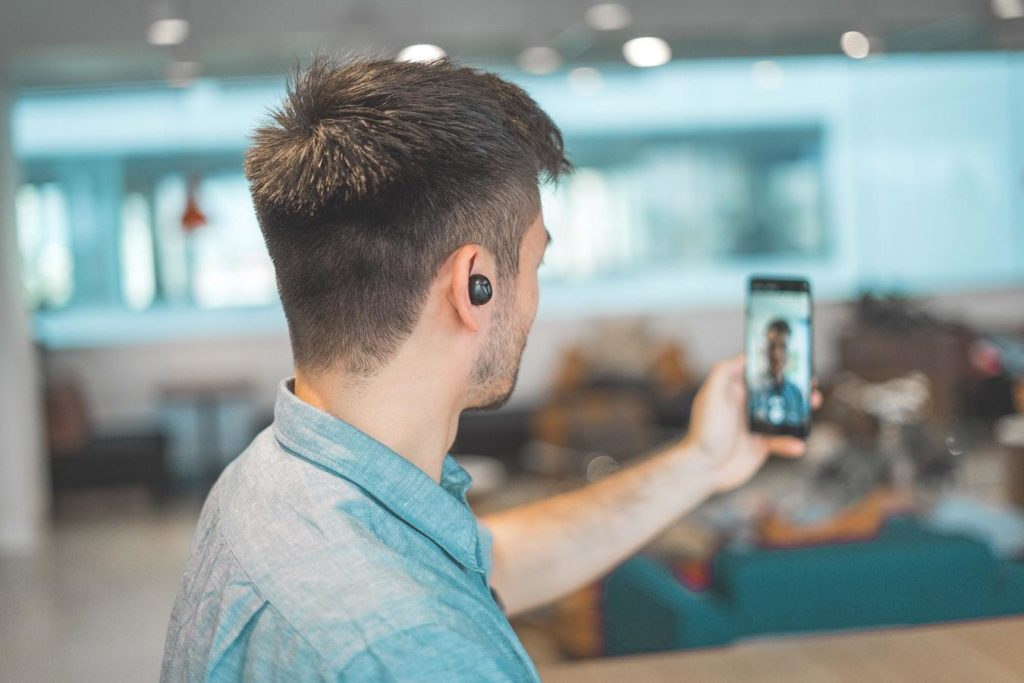In this videography guide, you’ll learn how to create a professional video from start to finish. We will give you video tips for:
-
t
- Pre-production
-
t
- Briefing
- Scripting
- Storyboarding
t
t
- Production
-
t
- Set up
- Lighting
- Framing
- Audio
- Focusing
- Rehearsing
- Shooting your footage
- Playback
- Capturing your b-roll
t
t
t
t
t
t
t
t
- Post-production
-
t
- Editing – with tips and tricks from professional Shootsta editors)
t
t
So whether you’re a professional videographer or just want to learn how not to shoot a glorified home video, you too can learn how to shoot like a pro – with Shootsta!
Pre-Production
1. Nail the brief
When it comes to video, planning is essential – and while making videos isn’t rocket science, being organised really helps. So the most important thing you can do in pre-production is write your brief. Let’s work through some key questions.
Who is your target audience?
The answer to this question will inform everything you do, from any creative requirements (length, visual, style, pace, etc.) all the way to whether you should create a video at all. The due diligence of considering your audience and how they prefer to consume content not only facilitates great user experiences, but also the most productive use of your time when creating content. If the answer to, “Will a video resonate best with my audience?” is yes, proceed to your objective.
What should your success metrics be?
This will be based on your goals as well as your delivery method. For example, if you’re a marketer planning ‘consideration’ content, your goal might be engagement, but what this looks like as a campaign objective on LinkedIn vs. Facebook can differ (For example, increasing company page followers or event registrations). B2B and B2C metrics can also differ for example, leads vs. sales. So it pays to think about your video’s delivery, as platforms often have native KPIs for measuring success depending on what you need to achieve.
That said, there are 5 basic metrics unique to video:
-
t
- Reach – How many people got served your video
- Views or Play Rate – How many people started watching it
- Average View Duration, Video Watch Time or Completion Rate – The average length of time people watched for
- Conversion Rate – How many people completed your CTA
- Engagement Rate or Post Engagement – How many people interacted with your video e.g. likes, comments, shares
t
t
t
t
You can learn more about these KPIs and the ‘waterfall method’ of measuring success here:
What is your message?
A.K.A. “Describe it to me in 1 sentence”. What’s the #1 thing you want people to take away from your video? The rookie error is communicating too many messages, which results in videos without focus (that don’t get seen). Next, what’s the best way to communicate that message? At Shootsta, we use the 3-10-30 rule: Hook people in the first 3 seconds, set the scene in the first 10 seconds (e.g. “Today, we’ll talk about…”) and communicate your single key message in the first 30 seconds. The remainder of your video should be adding value, then ending and extending with your CTA.
Getting granular
Once you’ve nailed your strategic framework, you can clarify things like:
-
t
- Format: What type of video do you need to communicate your message? Is it a spoken piece to camera, a tutorial, a 1-2 person interview, an event hype or a visual story for social media?
- Location: Where are you planning to shoot? Ideally, you’ll want somewhere quiet with natural lighting. Avoid shooting against white walls, as they’re flat and unengaging – open spaces and environments with depth and context look best, unless you’re shooting against a green screen.
- Gear: Many of our Shootsta clients use our pre-built camera kits, but if you haven’t used them yet, it’s worth making a list of your current gear and anything else you’ll need on the day, like your video camera, microphones, lights, spare batteries, gaffer tape, power cables etc.
t
t
2. Create your script and storyboard
Finally, the last part of the pre-production process is creating your script and storyboard. If your video will be majority speech (e.g. a piece to camera or interview), it might help to start with the script and your talking points first; whereas if your video is highly visual, the look and feel might warrant beginning with your storyboard and mapping out key scenes and cutaways. Make sure to note your suggested music, text overlays and video inspiration, as well as any on-screen actions.
Production
3. Set up your camera gear
Our Shootsta Kit comes stocked with a DSLR camera, tripod, LED light, mics, iPad autocue etc. – everything you need to shoot great videos. If you’re not a Shootsta client, check off your gear against your gear list from Step 1 and set up on stable ground, using a tripod or gimbal to avoid the shaky-cam (unless that’s what you’re going for)! Also ensure your backup tech is accounted for e.g. blank SD cards, charged batteries and the like.
4. Natural lighting is your friend
As mentioned, natural lighting is your friend – whether you’re indoors facing big windows or outdoors under soft, even light e.g. dusk, dawn or when it’s cloudy. Do avoid ‘spotlighting’ with overhead lights or direct sunlight, as this may cast unflattering shadows (you can fill them in with a well-placed LED). One way to test your lighting source is to do what we jokingly call the ‘spinny-thingy test’: grab your camera and place your hand / your talent before it, then spin in a circle around your subject to gauge where light looks best. Just don’t forget to check your white balance, which adjusts the ‘colour’ of the light; essentially, colours seen through the camera should match the human eye.
5. Frame a winning shot
Shot composition and positioning your talent
First up, think about your shot – your backdrop should be attractive and interesting, but not too busy. Next, position your talent within your shot and adjust your tripod so you’re filming at their eye level. Frame your shot from just above the waist, leaving enough headroom so your subject doesn’t look insignificant or imposing. For a piece to camera, your talent should be in the middle of frame with their shoulders front-on. For an interview, you’ll want them to look ‘off camera’, so position your talent using the ‘rule of thirds’ (just like on your iPhone!) in the left or right third of the frame, and have them turn towards the interviewer – off-screen, to one side of the camera.
Styling and tidying
While your focus will be on your talent, the backdrop sets the scene, even if the ‘depth of field’ is blurry – so keeping things clean and clear with minimal distractions is key. If your background is indoors, elements like greenery can add a zen vibe. A tip: take a photo of your shot then view it on a bigger screen, so you can spot any clutter or rubbish like water bottles, untidy desks, photobombing colleagues etc.
6. Record crisp, clear audio
With the Shootsta Kit, you get lapel / lav mics and an audio transmitter and receiver to capture sound. If you’re not a Shootsta client, you will want a separate mic to your camera’s native one, as it’s only good for ‘scratch audio’ (the reference point for aligning video and audio files, like you would using a clapper board).
To set up your audio, attach the receiver (RX) to the camera, then give the transmitter (TX) to your talent and plug in the lav mic. Ask them to hide the wire, like underneath a buttoned shirt, with the mic clipped between their first and second buttons; otherwise, clipped to their collar. Keep all mics free of hair, scarves and jewellery to avoid scratching noises. Get your talent to say a few test sentences so you can set your audio levels, keeping the volume between 50-75% to avoid distortion in the red zone.
You’ll also need to keep an eye (ear?) on your location’s acoustics and environmental noise e.g. echoing, sirens. This is where headphones plugged into your camera are essential, so you can check your talent’s volume against surrounding sounds to ensure great audio.
7. Focus your camera
While autofocus is a time-saver, it can be unreliable. We advise shooting with manual focus, as once set, it won’t read just throughout your video (note: best if your subject stays put). Ensure your talent is in focus by turning the focus ring on your camera until they’re clear; if you know a thing or two about cameras, you can use the peaking function, which overlays colour on everything that’s in focus. Handy!
8. Stage a quick dress rehearsal
Let your talent rehearse, so they can familiarise themselves with the script and autocue – if you have one – as well as taking a deep breath and smiling before they speak. It’ll also give you the opportunity to (gently) direct if they’re speaking too quickly, or not hitting the right tone with their delivery e.g. conversational.
9. “Rolling!”
Your shot is well lit, framed, focused, audio is clear, and your talent is comfortable and ready to go. Batteries? Full. Autocue? Prepped. Looks like it’s time to hit record!
10. Play back your footage (while on set)
Ideally, review your footage while on location, so if you need to reshoot you can. There’s nothing worse than checking takes on your camera’s display, only to discover something was wrong when recording audio / lighting / focus when on your computer back at the office.
11. Shoot your b-roll
Lastly, capture any outstanding b-roll for cutaways. If you’ve got a second camera, you’ll be able to shoot hand-held on your talent’s side, which offers backup footage (though you can ‘trick’ this with a single camera). It’s likely you’ll also need establishing shots, like wide building exteriors, or pans, like crowd reveals – maybe even a few extreme / macro close-ups for detail on food, items etc. Capture whatever you need to give context to your script, so the audio and visuals can work together.
Videography Guide: Part 3
Post-Production
12. Leave the editing to Shootsta! But if you can’t…
Tips and tricks from Shootsta’s editors
We asked our team for their top video tips when it comes to the editing process:
-
t
- Branding and consistency: Ensure your intros, lower thirds, text overlays, outros etc. all have a branded, consistent ‘look and feel’.
- Discover your narrative: An editor’s job is to digest your footage, then interpret the narrative / angle and reassemble the puzzle using editing software to tell a story that resonates. So think about any recurrent themes and how they might help communicate your message when editing.
- Cutaways: Show, don’t tell; choose your b-roll based on where it complements the spoken word. For example, soundbites – short, simple extracts used to explain or promote a longer piece of work – are great as you can pair them with visuals to imply context in a stronger, more interesting way than just a piece to camera quote.
- Music: Good background tracks shouldn’t overpower your video. Looking for free music (with no licensing requirements)? Try YouTube’s Audio Library.
- Be ruthless with editing: Cull, cull, cull! Video first cuts are often too long because people don’t want to sacrifice footage they like (or shot themselves). Also, audiences are smart – repetition and elaboration are rarely necessary, so keep it simple and you’ll be fine.
t
t
t
t
And that’s a wrap! We hope this videography guide has helped you learn to shoot like a pro. Feedback or comments? Please leave them below – we’d love to know what you think, as well as your tips and tricks for creating videos!
Interested in simple, fast and effective video? Shootsta can help
To find out more about how we can help you with your video needs, please enter your details below. We’ll get in touch as soon as possible.


